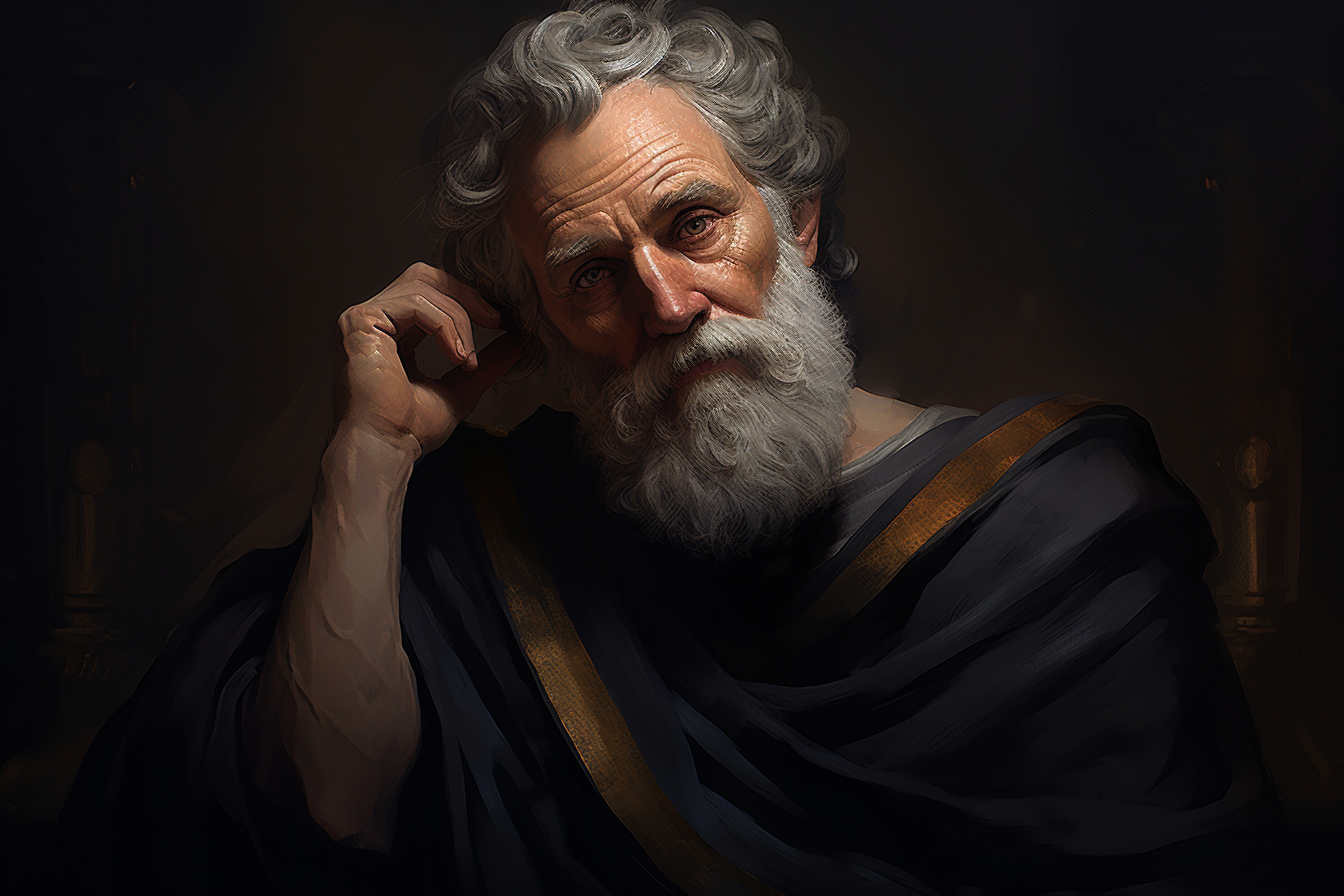Anaximander of Miletus (c. 612–545 BC) stands as one of the most influential pre-Socratic philosophers. A disciple of Thales, he ventured beyond his mentor's teachings to lay the foundations for a systematic exploration of the natural world. His contributions to cosmology, cosmogony, and biology, as well as his attempts to understand natural phenomena through rational, non-mythological explanations, mark him as a key figure in the history of Western thought.
Life and Work
Anaximander was a native of Miletus, an ancient Greek city on the western coast of Asia Minor. As a student of Thales, he was deeply influenced by his mentor’s approach to understanding the world. However, Anaximander’s curiosity and intellectual rigor led him to expand on Thales' ideas, culminating in his seminal work, On Nature. Although this work has not survived in its entirety, fragments and testimonies provide insight into his groundbreaking theories on the origins of the cosmos and life on Earth.
Anaximander’s approach to natural phenomena was revolutionary for his time. He was among the first thinkers to attempt a comprehensive explanation of the universe that did not rely on mythology. His rational explanations of winds, rains, earthquakes, and other natural occurrences positioned him as a pioneer of scientific thought. Additionally, Anaximander is credited with drawing the first map of the inhabited world, a testament to his desire to understand and systematize the world around him.
Earth and Heavenly Bodies
One of Anaximander’s most intriguing theories pertains to the shape and position of the Earth within the cosmos. He proposed that the Earth is cylindrical in shape, resembling a drum, with flat surfaces that remain in equilibrium at the center of the universe. This was a radical departure from the prevailing belief that the Earth was a flat disc. Anaximander's concept of a balanced Earth, floating in the center of the cosmos without falling, demonstrated his innovative thinking and his departure from mythological explanations.
His ideas about the heavenly bodies were equally groundbreaking. Anaximander suggested that celestial bodies were like "breathing holes" in the air, through which fire could be seen. This concept, although primitive by modern standards, was an early attempt to explain the nature of stars and other celestial objects through observation and reasoning rather than myth.
Anaximander also ventured into theories of biological origins. He believed that life originated from moisture that had been evaporated by the sun. According to him, the first living organisms emerged from this primordial moisture, eventually giving rise to more complex forms of life. He proposed that humans themselves evolved from fish-like creatures, as humans, unlike other animals, require prolonged care during infancy. This idea, which hints at a form of evolutionary thinking, was remarkably advanced for his time.
The Apeiron: Anaximander’s Central Doctrine
Perhaps the most significant contribution of Anaximander to philosophy is his concept of the apeiron—a term he used to describe the "unlimited" or "infinite" substance that he believed was the origin of all things. Anaximander was the first philosopher to propose that the arche (principle or origin) and stoicheion (element) of all existence was something indefinite and boundless. This apeiron was not only the source from which everything arises but also the destination to which everything returns upon its destruction.
Anaximander’s apeiron was eternal and indestructible, lacking any specific qualities like size, shape, or composition. It was limitless in terms of space, time, quality, and quantity, and it functioned as the underlying principle of all change and existence. The concept of the apeiron also echoed the ontological neutrality found in Hesiod’s idea of Chaos, positioning it as a precursor to the structured cosmos.
One of the surviving fragments attributed to Anaximander provides a glimpse into his poetic yet profound explanation of the apeiron: “From the source from which they arise, to that they return of necessity when they are destroyed, 'for they suffer punishment and make reparation to one another for their injustice according to the assessment of time'.” This statement reflects Anaximander’s belief in a cosmic order where everything follows a natural cycle of birth, existence, and eventual return to the apeiron.
Fragments and Testimonies
The fragments and testimonies that survive offer invaluable insights into Anaximander’s philosophy. One such fragment describes his view that the apeiron is the source of the heavens and the kosmos, suggesting that all of existence is an orderly system emanating from this boundless principle. Another fragment refers to the apeiron as "deathless and indestructible," further emphasizing its eternal nature.
Anaximander’s comparison of the Earth to a stone column section also illustrates his unique perspective on the natural world. By conceptualizing the Earth as a cylindrical object in equilibrium, he laid the groundwork for future thinkers to explore the geometry and dynamics of the cosmos.
Conclusion
Anaximander of Miletus was a trailblazer whose ideas and theories laid the foundation for much of Western natural philosophy. His bold departure from mythological explanations of the world in favor of rational, systematic inquiry was a significant leap forward in human thought. Through his work, On Nature, and his introduction of concepts like the apeiron, Anaximander sought to understand the underlying principles governing the cosmos and the origins of life. His legacy endures as a testament to the power of human curiosity and the relentless pursuit of knowledge.









